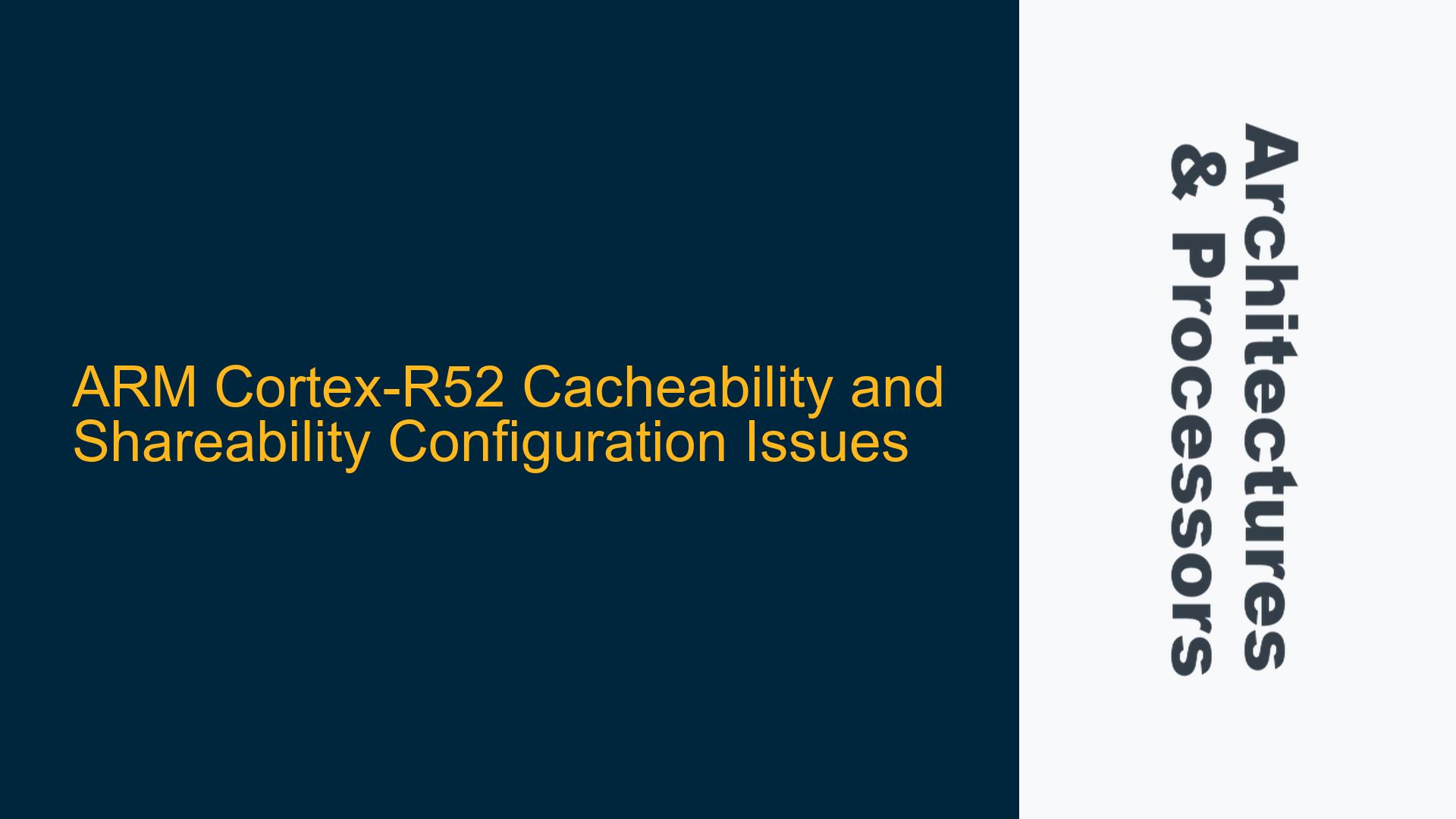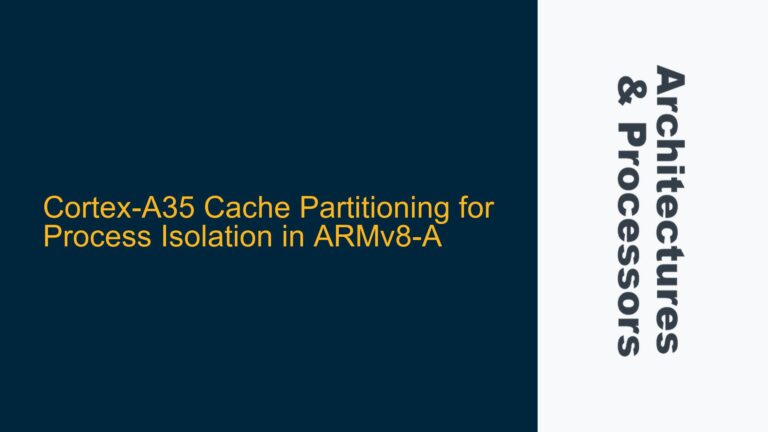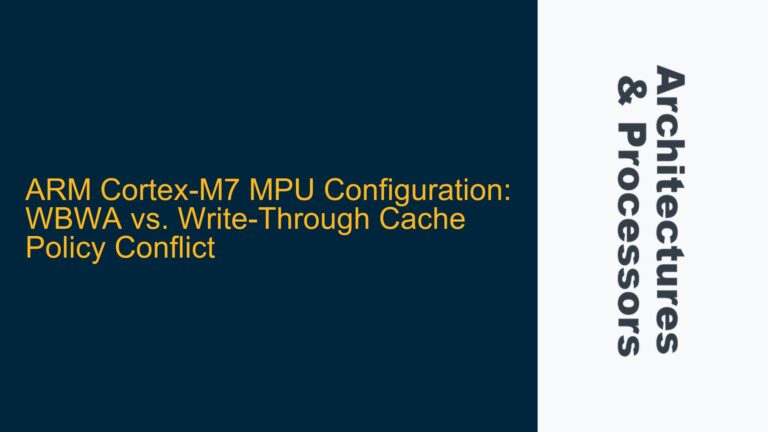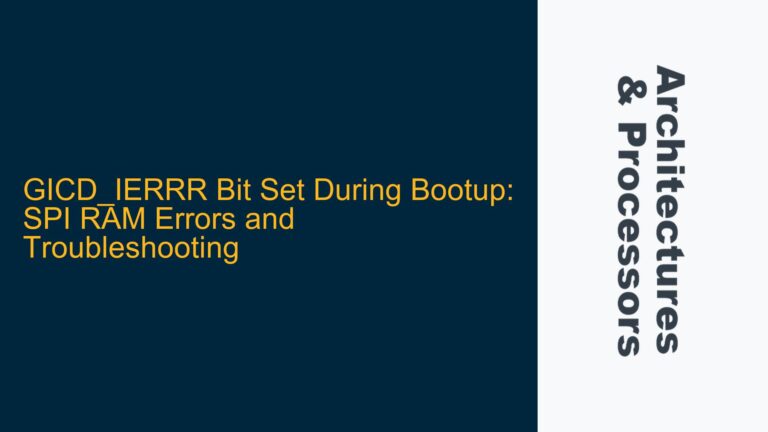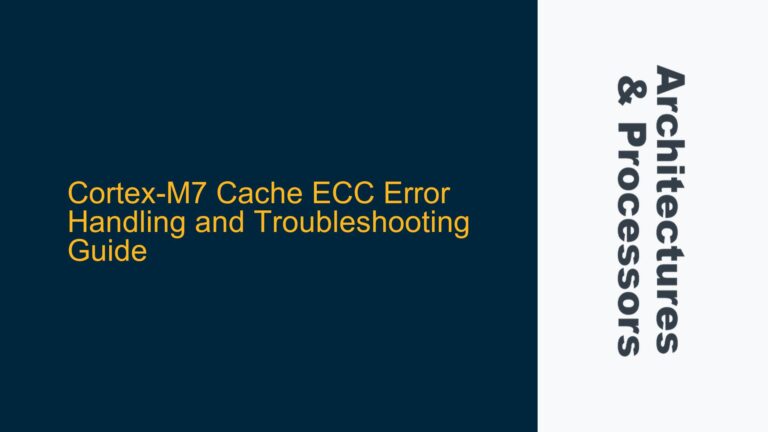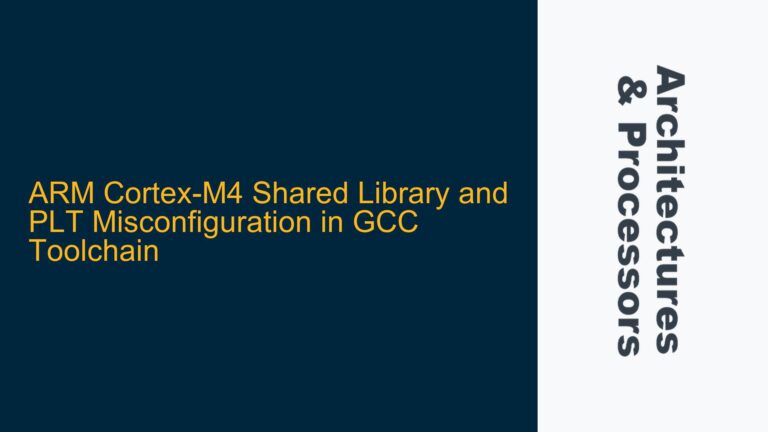ARM Cortex-R52 Cacheability and Shareability Attributes in Multi-Core Systems
The ARM Cortex-R52 processor, commonly used in real-time and safety-critical applications, presents unique challenges when configuring memory attributes, particularly in systems with multiple cores and external masters like DMA controllers. The Cortex-R52 features integrated Level 1 (L1) instruction and data caches but lacks hardware coherency mechanisms between cores or with external agents. This architecture necessitates careful configuration of memory attributes, specifically the Inner and Outer Shareability attributes, to ensure correct and efficient memory sharing across cores and external devices.
In a typical Cortex-R52-based system, such as the one described, there are two clusters, each containing two cores. External masters, like DMA controllers, access system RAM via a system bus. The primary concern is understanding how the Inner and Outer Shareability attributes affect memory sharing between cores within the same cluster, between cores in different clusters, and with external masters like DMA controllers. Misconfiguration of these attributes can lead to data incoherence, performance bottlenecks, or even system failures.
The Cortex-R52 Technical Reference Manual (TRM) specifies that memory regions configured as either Inner or Outer Shareable are treated as non-cacheable from the perspective of the processor cores. This behavior is critical to understand because it directly impacts how data is shared and maintained across the system. Without hardware coherency, software must manage cache maintenance operations explicitly, such as flushing or invalidating caches, to ensure data consistency.
Memory Attribute Misconfiguration and Lack of Hardware Coherency
The core issue stems from the Cortex-R52’s lack of hardware coherency between cores and external masters. This means that any memory region marked as Inner or Outer Shareable is treated as non-cacheable by the processor cores. While this design simplifies the hardware, it places the burden of cache management on software. The following are the primary causes of issues in such systems:
-
Incorrect Shareability Attribute Configuration: Misconfiguring the Inner and Outer Shareability attributes can lead to unintended behavior. For example, marking a memory region as Inner Shareable when it should be Outer Shareable can prevent external masters like DMA controllers from accessing the data correctly. Conversely, marking a region as Outer Shareable when it should be Inner Shareable can lead to unnecessary cache maintenance operations, impacting performance.
-
Cache Maintenance Omissions: Since the Cortex-R52 lacks hardware coherency, software must explicitly manage cache maintenance operations. Failing to flush or invalidate caches before and after DMA operations can result in data incoherence. For instance, if a DMA controller writes data to a memory region that is cached by a processor core, the core may continue to use stale data from its cache unless the cache is invalidated.
-
Instruction Cache Coherency Issues: In multi-core systems, instruction caches can also pose challenges. If a memory region containing instructions is marked as Inner or Outer Shareable, the Cortex-R52 treats it as non-cacheable. This means that instructions shared across multiple cores, such as those in an operating system kernel, cannot be cached in the L1 instruction cache. This can lead to performance degradation, as the cores must fetch instructions from memory repeatedly.
-
System-Level Caching Effects: The behavior of memory sharing is also influenced by system-level caching. If the system includes shared caches or if the target memory location has specific caching properties, these factors must be considered when configuring memory attributes. Ignoring system-level caching can lead to unexpected behavior, such as data being cached at a system level but not at the core level, or vice versa.
Implementing Correct Cache Management and Shareability Configuration
To address the issues arising from the Cortex-R52’s memory attribute configuration and lack of hardware coherency, the following troubleshooting steps, solutions, and fixes are recommended:
-
Accurate Shareability Attribute Configuration: Ensure that memory regions are correctly configured as Inner or Outer Shareable based on their usage. Memory regions shared between cores within the same cluster should be marked as Inner Shareable, while regions shared between cores in different clusters or with external masters like DMA controllers should be marked as Outer Shareable. This ensures that the memory is accessible to the intended agents without unnecessary cache maintenance overhead.
-
Explicit Cache Maintenance Operations: Implement explicit cache maintenance operations to ensure data coherence. Before a DMA operation, flush the cache to ensure that any modified data in the cache is written back to memory. After the DMA operation, invalidate the cache to ensure that the processor cores fetch the updated data from memory. The Cortex-R52 provides cache maintenance instructions, such as Data Cache Clean (DCC) and Data Cache Invalidate (DCI), which can be used for this purpose.
-
Instruction Cache Management: For memory regions containing instructions shared across multiple cores, avoid marking them as Inner or Outer Shareable if caching is desired. Instead, use non-shareable memory attributes to allow the cores to cache the instructions in their L1 instruction caches. If instruction sharing is necessary, consider using software-based mechanisms to ensure coherence, such as self-modifying code barriers or explicit cache invalidations.
-
System-Level Caching Considerations: Take into account the system-level caching architecture when configuring memory attributes. If the system includes shared caches, ensure that the memory attributes are consistent with the caching behavior at both the core and system levels. Use the Cortex-R52’s Memory Protection Unit (MPU) to define memory regions with appropriate attributes, and consult the system’s memory map to understand how memory regions are cached at the system level.
-
Performance Optimization: While ensuring data coherence is critical, it is also important to optimize performance. Minimize the frequency of cache maintenance operations by batching them where possible. Use the Cortex-R52’s cache locking mechanisms to lock critical data or instructions in the cache, reducing the need for frequent cache invalidations. Profile the system to identify performance bottlenecks and adjust the memory attribute configuration and cache management strategy accordingly.
-
Debugging and Verification: Use debugging tools to verify the correctness of the memory attribute configuration and cache management operations. ARM provides tools like the DS-5 Debugger and Trace tools, which can be used to monitor cache behavior and identify issues. Implement unit tests and system-level tests to validate the memory sharing and cache coherence mechanisms. Use hardware performance counters to measure the impact of cache maintenance operations on system performance.
By following these steps, developers can effectively manage the challenges posed by the Cortex-R52’s memory attribute configuration and lack of hardware coherency. Proper configuration of Inner and Outer Shareability attributes, combined with explicit cache management, ensures data coherence and optimal performance in multi-core systems with external masters like DMA controllers. Understanding the system-level caching architecture and using appropriate debugging and verification tools further enhances the reliability and efficiency of the system.
